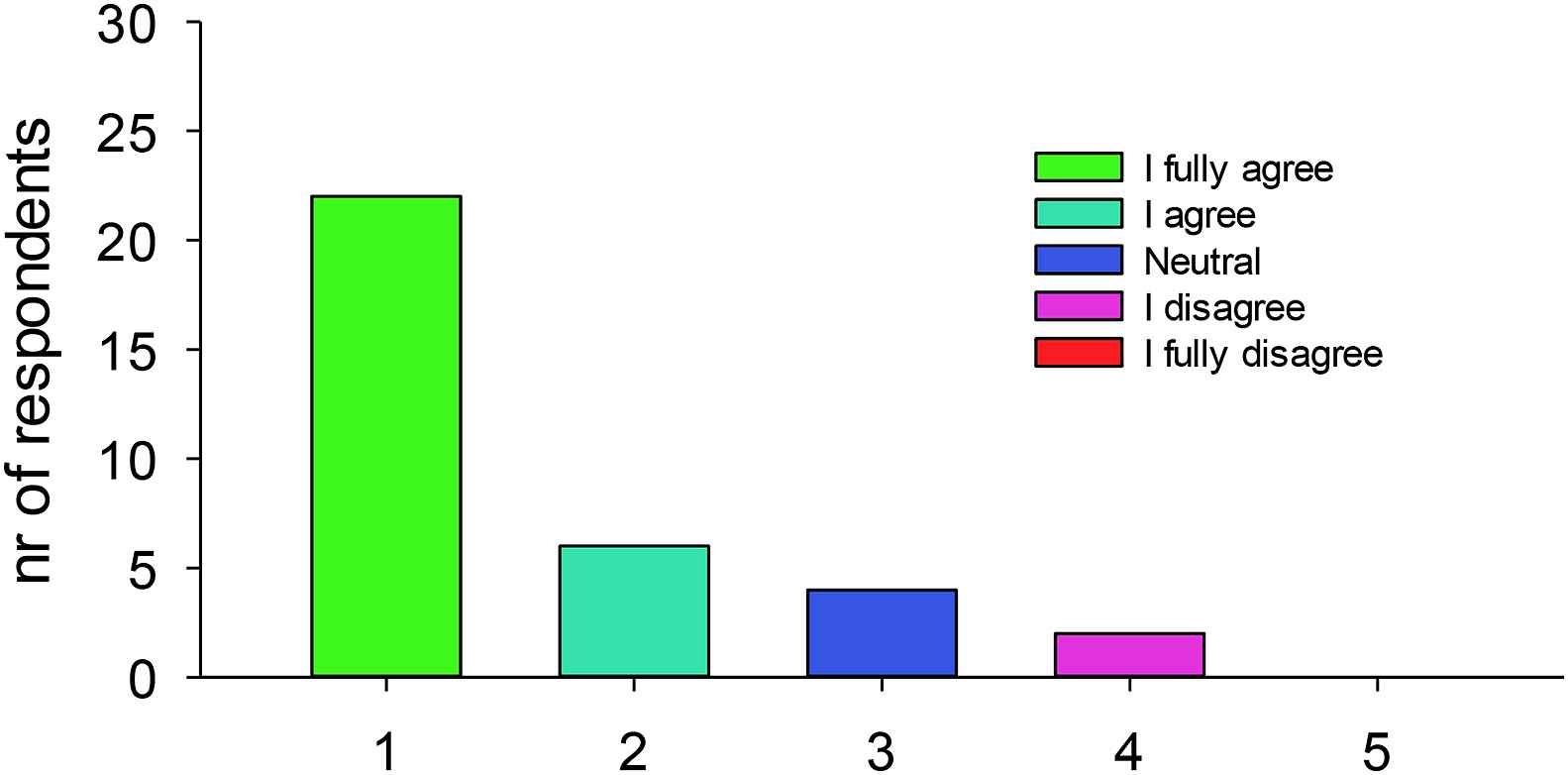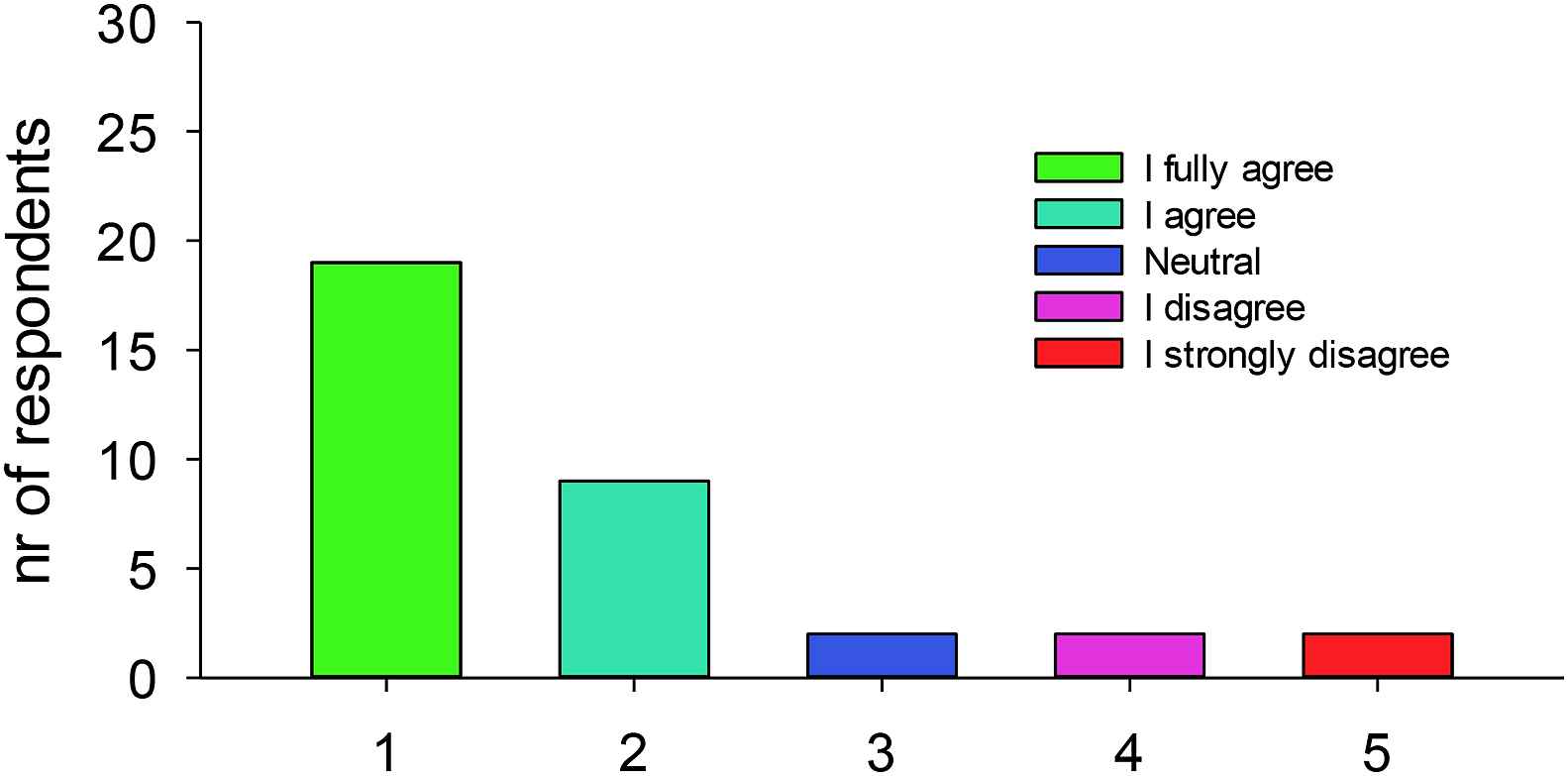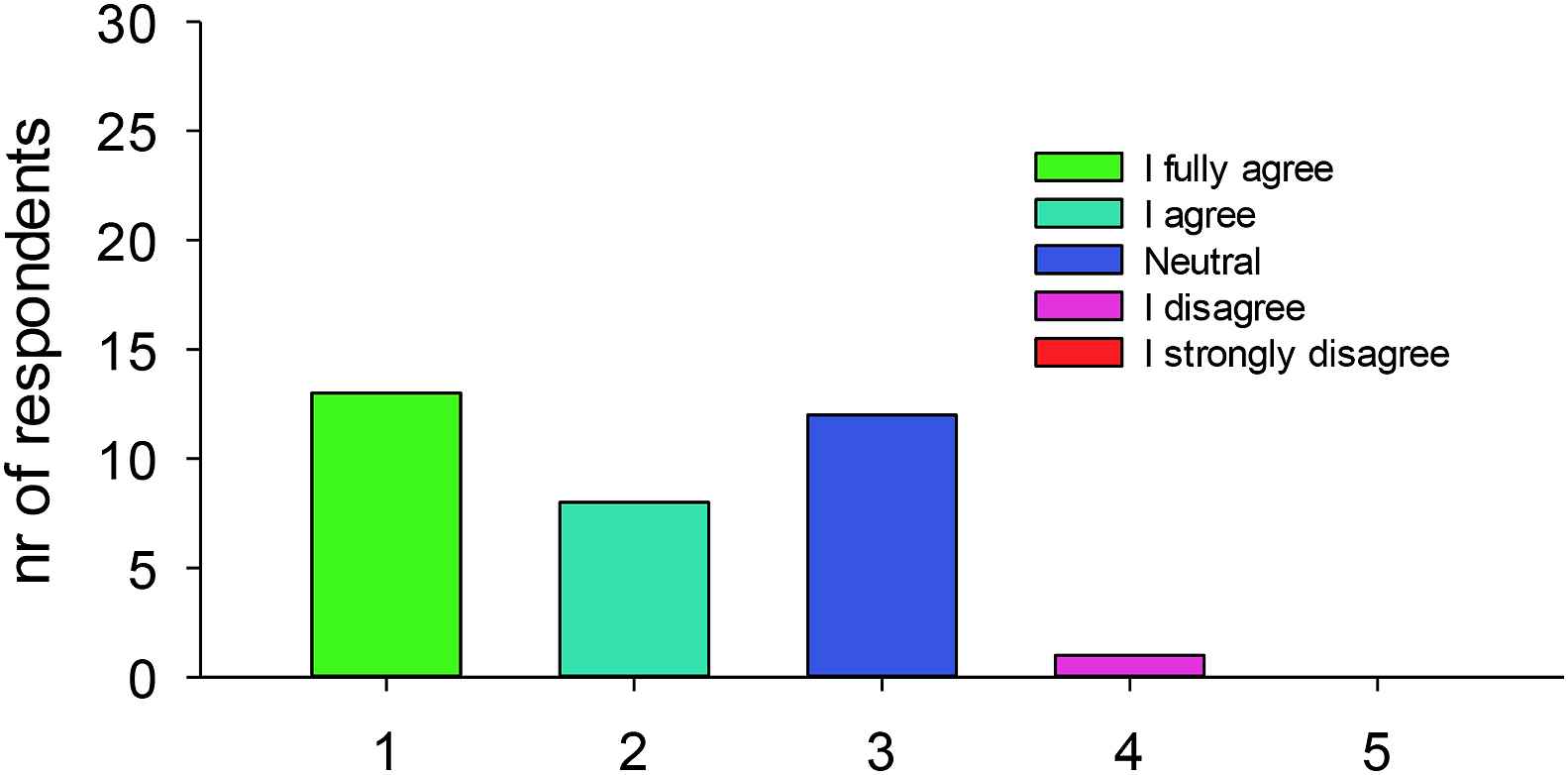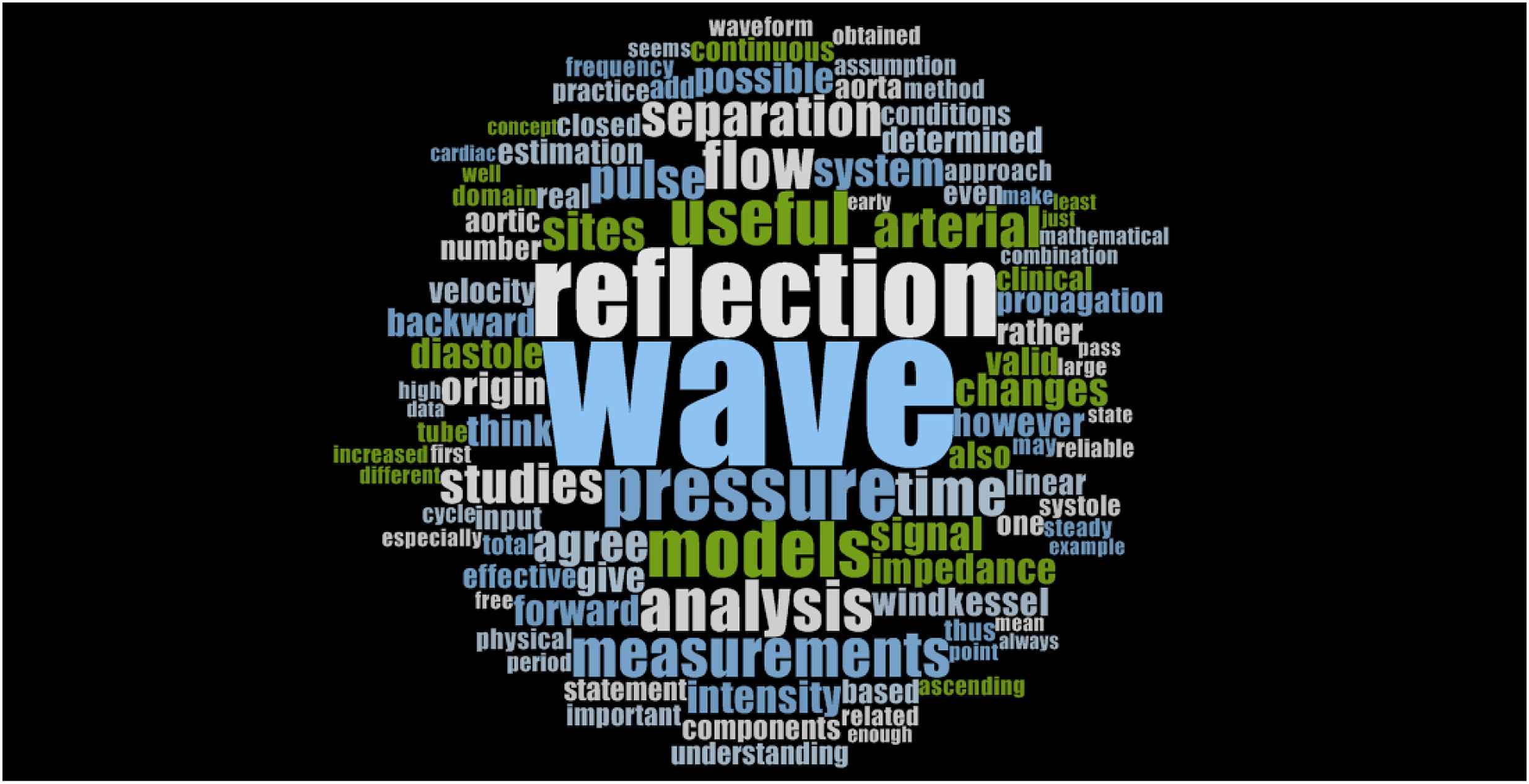Towards a consensus on the understanding and analysis of the pulse waveform: Results from the 2016 Workshop on Arterial Hemodynamics: Past, present and future
- DOI
- 10.1016/j.artres.2017.03.004How to use a DOI?
- Keywords
- hemodynamics; wave reflection; modelling; windkessel
- Abstract
This paper aims to summarize and map contemporary views on some contentious aspects of arterial hemodynamics that have remained unresolved despite years of research. These were discussed during a workshop entitled Arterial hemodynamics: past, present and future held in London on June 14 and 15, 2016. To do this we formulated a list of potential consensus statements informed by discussion at the meeting in London and quantified the degree of agreement and invited comments from the participants of the workshop. Overall the responses and comments show a high measure of quantitative agreement with the various proposed ‘consensus’ statements. Taken together, these statements seem a useful basis for proceeding with a more detailed and comprehensive consensus document on the current understanding and approaches to analysis of the pulse waveform. Future efforts should be directed at identifying remaining areas of dispute and future topics for research.
- Copyright
- © 2017 Association for Research into Arterial Structure and Physiology. Published by Elsevier B.V. All rights reserved.
- Open Access
- This is an open access article distributed under the CC BY-NC license.
Introduction
The Association for Research into Arterial Structure and Physiology (Artery Society) is proud to count some “eminence grises” among its active members, including Michael O’Rourke, Nico Westerhof and Kim Parker. All three have been honoured by the society over the past few years with Lifetime Achievement Awards or McDonald lectures.1–3 It was on one of these occasions (the 2013 annual meeting in London), that we realized that the legacy of these giants should be preserved. In addition to their books and numerous papers on hemodynamics and cardiovascular function, seen as reference works in the field, we thought it would be valuable to record audio-visual material, reflecting their viewpoints and contributions to modern hemodynamics and cardiovascular mechanics, which would produce valuable material available not only for the scientific community but also for teaching and graduate and postgraduate training.
It still took us a couple of years to finally organize a workshop entitled Arterial hemodynamics: past, present and future held in London on June 14 and 15, 2016. We also felt that, together with the recognition for the work of Nico, Michael and Kim, the workshop would also offer an opportunity to discuss some contentious aspects of our field that have remained unresolved despite years of research. In particular, the importance of waves and wave reflections in shaping the arterial pulse, and the Windkessel-like behaviour of the arterial system in diastole have been the subject of debate.4–9 In this special issue of Artery Research, Michael O’Rourke, Kim Parker and Nico Westerhof present summaries of their views and contributions. [refs to be added] The audio-visual recording of their talks in London can also be found at the Artery Society website (http://www.arterysociety.org/arterial-hemodynamics-download-videos-from-meeting/).
In this manuscript, we sought to evaluate whether a degree of consensus could be achieved on some of the topics covered by O’Rourke, Westerhof and Parker. To do this we formulated a list of potential consensus statements informed by discussion at the meeting in London. However, rather than simply positing these statements, we felt it might be more interesting, relevant and fair to quantify the degree of agreement and invite comments from the participants of the workshop to be included in this manuscript.
Methods
Following the London meeting, all attendees were contacted by e-mail on November 17th, 2016 and invited to participate in an internet survey, with a deadline set on December 1st, 2016. Participation to the survey was coupled with co-authorship on the manuscript, and hence was not anonymous, although participants were permitted to make unattributable comments for inclusion in the manuscript, or comments not for publication. The internet survey was created in Google Forms and participants were asked to what extent they agreed with each of 9 statements (initially formulated by Segers and revised by Hughes) using a Likert scale (a score of 1 indicating full agreement, and a score of 5 indicating full disagreement). Comments have been presented verbatim in supplementary tables, except for corrections of spelling or other typographical errors and reformatting of references for consistency.
Results
31 participants out of 51 attendees at the meeting spontaneously responded to the survey. The number of comments on each statement ranged between 7 and 16. Additional comments were collected from Parker, Westerhof and O’Rourke after the deadline to obtain their views on all statements. Of the 34 respondents, 3 requested that their comments be unattributable and 2 requested that their comments not be published. The comments of O’Rourke, Westerhof and Parker are provided in the bottom rows of the supplementary tables.
Statement 1. It’s all about waves!
The heart is a pulsatile pump, and blood pressure is the result of waves travelling back and forth in the arterial system. Diastole is therefore not a wave-free period, although the intensity of waves in diastole is generally small or undetectable. Waves persist in systole and diastole, and the pressure decay in diastole can be explained on the basis of re-reflection of forward waves, including reflection of cardiac compression and expansion waves. Any particular arterial pulse is the result of wave dynamics generated in that particular beat, but also contains a contribution from previous beats. Strictly speaking, there is no such thing as a reflection-free period (not even early systole) although the intensity of the waves varies throughout the cycle.
Most respondents fully agreed with the statement (Fig. 1). Nevertheless, despite the strong overall consensus that wave dynamics are fundamental to arterial hemodynamics, several pertinent comments or qualifications were made regarding the conceptual framework (Supplementary Table S1). Notably, some respondents questioned the importance of the contribution of previous heart beats to the current pulse waveform (Supplementary Table S1). At the same time, it was noted that numerical modelling supported the idea that previous beats contribute to the current pulse (Supplementary Table S1).

Summary of responses to statement 1. It’s all about waves!.
Statement 2. Wave reflection is continuous and diffuse
There is no single or limited number of discrete reflection sites in the arterial tree. Wave reflection takes place wherever there is a change in characteristic impedance, which implies reflections at branching points, along tapering tubes, etcetera.
The majority of respondents fully agreed with this statement (Fig. 2); however, commentators raised issues regarding the location of reflection sites, the concept of ‘effective’ reflection sites and the importance of reflection at the aortic root (Supplementary Table S2).

Summary of responses to statement 2. Wave reflection is continuous and diffuse.
Statement 3. Impedance analysis is a valid way to analyse the arterial system
Impedance analysis, based on Fourier-transformed pressure and flow waves, is a valid characterization of the arterial system. Drawback of impedance analysis, however, is that it is performed in the frequency domain, which is somewhat abstract. It also relies on the assumption that the system is in steady state, making the method unsuitable for the analysis of transient states and phenomena.
The majority of responders fully agreed or agreed (Fig. 3). Comments included noting linearity as an assumption of Fourier analysis, criticism of the use of the term ‘valid’, and questioning the use of the term ‘somewhat abstract’ (Supplementary Table S3).

Summary of responses to statement 3. Impedance analysis is a valid way to analyse the arterial system.
Statement 4. Wave intensity analysis is a valid way to analyse wave dynamics
Wave intensity analysis represents a very elegant technique to analyse the timing and nature of waves, and is suitable to analyse transient states and phenomena. The method can be performed in the time domain and is more intuitive than impedance analysis, but calculation of wave intensity involves multiplication of derivatives of pressure and flow which renders the method very susceptible to noise and might potentially introduce spurious waves when signals are not adequately filtered and/or time aligned. Wave intensity analysis emphasizes rapid changes in pressure and flow and tends to underemphasize slowly changing signals.
A large majority of responders fully agreed or agreed with this statement (Fig. 4). Comments are shown in Supplementary Table S4. These drew attention to mainly technical issues related to the high frequency content of wave intensity signals, timing and alignment of pressure and velocity signals, sampling frequency, and the determination of wave speed. In addition, the use of the term ‘very elegant’ was criticised as unscientific.

Summary of responses to statement 4. Wave intensity analysis is a valid way to analyse wave dynamics.
Statement 5. Wave separation analysis
Wave separation analysis can be done in either the time or frequency domain, results are essentially identical. In wave separation analysis, all forward and backward waves are summed, which implies that the forward and backward components also include re-reflections. The separation of pressure (and flow) waves into one compound forward and backward wave does not imply that the compound backward wave is the result of the reflection of the compound forward wave at a given discrete “effective” reflection site. The “self-cancelling” flow waves in diastole are not in contradiction with physics.
The majority of responders fully agreed or agreed with the statement. Comments (Supplementary Table S5) related to the interpretation of ‘effective reflection site’, ‘self-cancelling’ waves the ratio of backward to forward waves and the inability to distinguish reflected from re-reflected waves. It was noted that wave separation analysis had advantages over use of augmentation index (Fig. 5).

Summary of responses to statement 5. Wave separation analysis.
Statement 6. Timing of wave reflections should be based on pressure and flow/velocity
As full wave analysis implies knowledge of pressure and flow (or velocity), it is difficult to get accurate information on the timing of wave reflections based on pressure or flow signals alone. Assessment of the timing of reflection should be based on high-fidelity pressure and flow waveforms, e.g. using wave intensity analysis. Timing based on identification of fiducial points on signals derived from transfer functions may be inaccurate.
Most responders fully agreed or agreed with the statement (Fig. 6). Comments (Supplementary Table S6) generally agreed with the limitations of (generalized) transfer functions, but some noted that estimates using generalized transfer functions broadly agreed with more direct measures and that the combination of pressure and flow analysis have never been proved to be better than pressure-alone approach for predicting long-term outcomes in population-based studies.

Summary of responses to statement 6. Timing of wave reflections should be based on pressure and flow/velocity.
Statement 7. Windkessel models
Windkessel models are zero dimensional, lumped parameter models and cannot account for any wave travel/reflection. They are, by definition, limited in capturing the physics of the arterial system, no matter how many parameters they contain.
Most responders fully agreed or agreed (Fig. 7). Commentators (Supplementary Table S7) were critical of the term “the physics of the arterial system” and questioned the evidence that Windkessel models could capture wide dynamic changes in hemodynamics, or how the statement took account of distal flow and resistance. Other comments related to pros and cons of the Windkessel model, and one respondent noted the relationship of Windkessel models to 1-dimensional models.

Summary of responses to statement 7. Windkessel models.
Statement 8. Tube and T-tube models
Tube and T-tube models do account for wave travel and reflection, but assume one or two discrete reflection sites and are, by definition, limited in representing the behaviour of the arterial tree. They can be an unreliable basis for physiological or pathophysiological interpretations.
Most responders fully agreed or agreed with this statement (Fig. 8) and this statement elicited fewest comments - six (Supplementary Table S8). Some responders noted the historical significance of these models.

Summary of responses to statement 8. Tube and T-tube models.
Statement 9. The reservoir-wave concept
The reservoir-wave model is a conceptual model/paradigm, just as the Windkessel, uniform tube and T-tube models. As for all simplified models, it has limitations. The reservoir pressure travels and displays wave-like properties. In the aorta in the absence of large intensity backward waves, the excess pressure (Pexcess) equals Q*Zc, with Q the flow and Zc aortic characteristic impedance. In diastole, the reservoir pressure equals 2Pb, with Pb the backward wave as obtained from wave separation analysis. The excess pressure should not be used in conjunction with measured flow to analyse wave dynamics. Some parameters such as the excess pressure integral do seem to have prognostic value. It is not clear whether this is because of the paradigm or despite the paradigm.
The majority of respondents fully agreed or agreed with this statement (Figure) but approximately one third of responders were neutral, which was greater than for any of the other consensus statements. This statement evoked the largest number of comments (fifteen). Respondents made a number of conceptual and technical criticisms (Supplementary Table S9) (Fig. 9).

Summary of responses to statement 9. The reservoir-wave concept.
Discussion and conclusions
Overall the responses and comments show a high measure of quantitative agreement with the various proposed ‘consensus’ statements. This is consistent with a more qualitative analysis (Fig. 10) showing that the words ‘agree’ and ‘useful’ featured commonly in comments.

Word cloud derived from comments received in response to consensus statements.
At the same time, caution is warranted when interpreting the data. Statements were formulated by only two people (first draft by PS and revised by AH), and may embed unintentional bias. Some statements may also have been too broadly formulated, making it harder to obtain clear-cut positions on specific topics. Another aspect is the fact that it is highly unlikely that all participants to the poll have the same degree of expertise on all of the topics. As we did not want to weigh answers according to a presumed level of competence (what may also be another source of bias), all answers have been equally valued.
Taken together, these statements seem a useful basis for proceeding with a more detailed and comprehensive consensus document on the current understanding and approaches to analysis of the pulse waveform. Future efforts should be directed at identifying remaining areas of dispute and future topics for research.
Conflicts of interest
None.
Acknowledgements
The authors are grateful for financial support from the British Heart Foundation and the Association for Research into Arterial Structure and Physiology (Artery Society) to assist with running the 2016 Workshop on Arterial Hemodynamics: past, present and future. AH also receives support from the National Institute for Health Research University College London Hospitals Biomedical Research Centre. Funders played no role in these analyses or the decision to submit the manuscript for publication.
Appendix A
Supplementary data
Supplementary data related to this article can be found at
References
Cite this article
TY - JOUR AU - Patrick Segers AU - Michael F. O’Rourke AU - Kim Parker AU - Nico Westerhof AU - Alun Hughes AU - on behalf of the Participants of the 2016 Workshop on Arterial Hemodynamics: Past, present and future PY - 2017 DA - 2017/04/28 TI - Towards a consensus on the understanding and analysis of the pulse waveform: Results from the 2016 Workshop on Arterial Hemodynamics: Past, present and future JO - Artery Research SP - 75 EP - 80 VL - 18 IS - C SN - 1876-4401 UR - https://doi.org/10.1016/j.artres.2017.03.004 DO - 10.1016/j.artres.2017.03.004 ID - Segers2017 ER -
